Highest heat of hydrogenation is shown by which of the following compound?
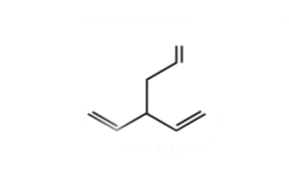
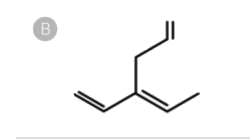
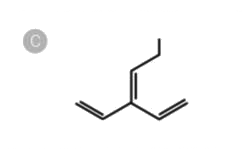

The correct Answer is:A
To determine which compound has the highest heat of hydrogenation, we need to analyze the degree of conjugation in each of the given compounds. The heat of hydrogenation is inversely proportional to the degree of conjugation; that is, the more conjugated a compound is, the lower its heat of hydrogenation will be.
1. Understanding Heat of Hydrogenation:
- Heat of hydrogenation refers to the heat change when one mole of an unsaturated compound reacts with hydrogen to form a saturated compound.
- Compounds with more conjugation (alternating double and single bonds) will have lower heats of hydrogenation because they are more stable.
2. Analyzing the Options:
- Option A: This compound has a structure with a double bond followed by single bonds. There is no conjugation present.
- Option B: This compound has alternating double bonds, indicating some degree of conjugation.
- Option C: This compound has multiple alternating double and single bonds, indicating a higher degree of conjugation than Option B.
- Option D: This compound is a benzene ring with an ethyl group. Benzene is aromatic, which means it has a significant degree of stability due to resonance, leading to very low heat of hydrogenation.
3. Comparing the Degrees of Conjugation:
- Option A has no conjugation and will have the highest heat of hydrogenation.
- Option B has some conjugation and will have a lower heat of hydrogenation than A.
- Option C has more conjugation than B, resulting in an even lower heat of hydrogenation.
- Option D has the most stability due to aromaticity, leading to the lowest heat of hydrogenation.
4. Conclusion:
- Since Option A has no conjugation, it will have the highest heat of hydrogenation compared to the other options.
Final Answer:
Option A has the highest heat of hydrogenation.
- Heat of hydrogenation refers to the heat change when one mole of an unsaturated compound reacts with hydrogen to form a saturated compound.
- Compounds with more conjugation (alternating double and single bonds) will have lower heats of hydrogenation because they are more stable.
- Option A: This compound has a structure with a double bond followed by single bonds. There is no conjugation present.
- Option B: This compound has alternating double bonds, indicating some degree of conjugation.
- Option C: This compound has multiple alternating double and single bonds, indicating a higher degree of conjugation than Option B.
- Option D: This compound is a benzene ring with an ethyl group. Benzene is aromatic, which means it has a significant degree of stability due to resonance, leading to very low heat of hydrogenation.
- Option A has no conjugation and will have the highest heat of hydrogenation.
- Option B has some conjugation and will have a lower heat of hydrogenation than A.
- Option C has more conjugation than B, resulting in an even lower heat of hydrogenation.
- Option D has the most stability due to aromaticity, leading to the lowest heat of hydrogenation.
- Since Option A has no conjugation, it will have the highest heat of hydrogenation compared to the other options.
Option A has the highest heat of hydrogenation.
Similar Questions
Knowledge Check
Which of the following orders is correct for heat of hydrogenation of these compounds?
 AX>Y>ZBZ>Y>XCY>Z>XDZ>X>Y
AX>Y>ZBZ>Y>XCY>Z>XDZ>X>Y
Which of the following orders is correct for heat of hydrogenation of these compounds ?AI>III>IIBIII>II>ICIII>I>IIDII>I>III
Which of the following orders is correct for heat of hydrogenation of these compounds ?AI>II>IIIBIII>II>ICII>III>IDIII>I>II
The heat of neutralisation will be highest for which of the following neutralisation reactions?
View SolutionThe order of heat of hydrogenation in following compounds is:

View SolutionWhich is order of heat of hydrogenation for the following set of molecules :-
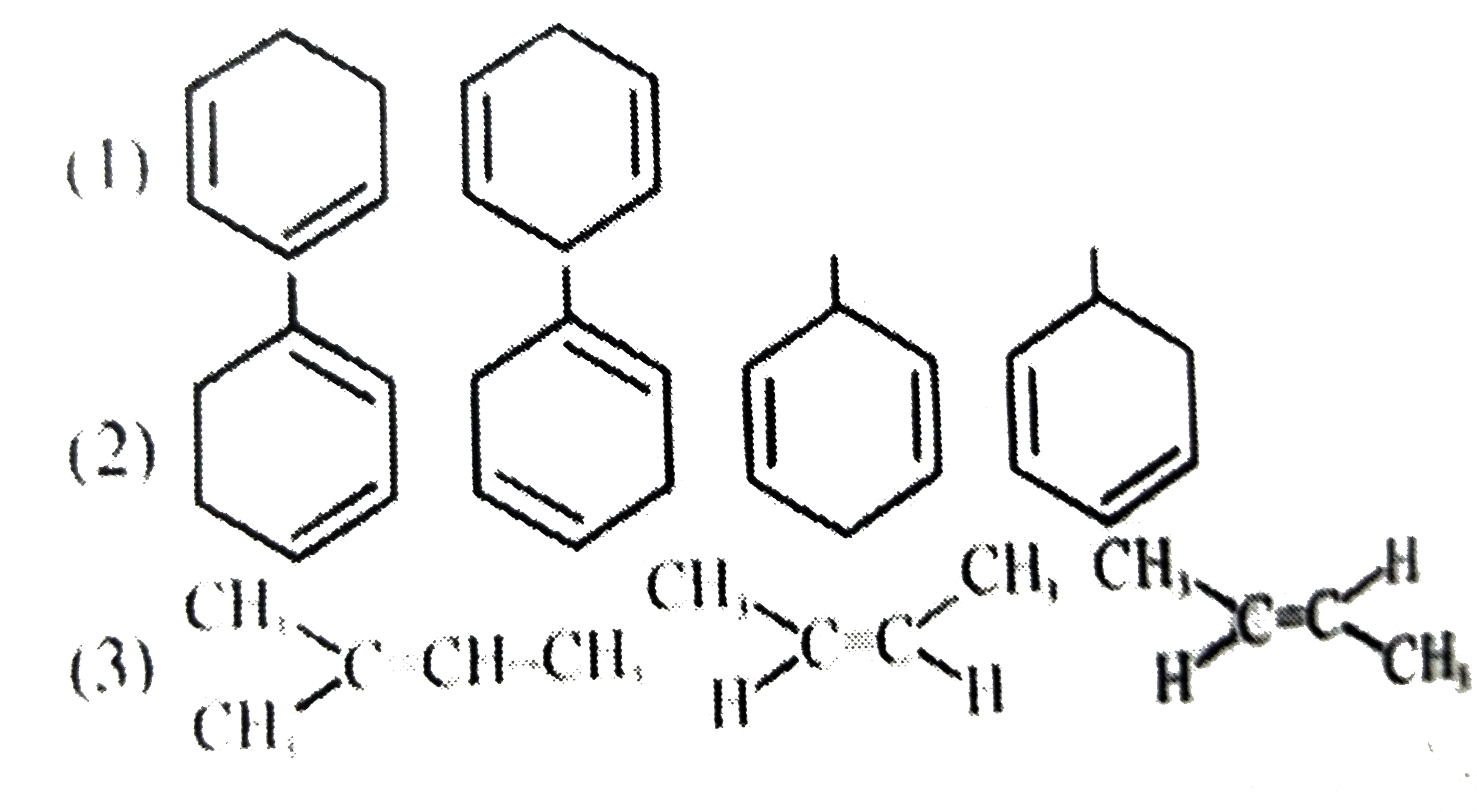
View SolutionCompared heat of hydrogenation of the following

View SolutionNumber of moles of hydrogen will required for complete hydrogenation of one mole of following compounds :
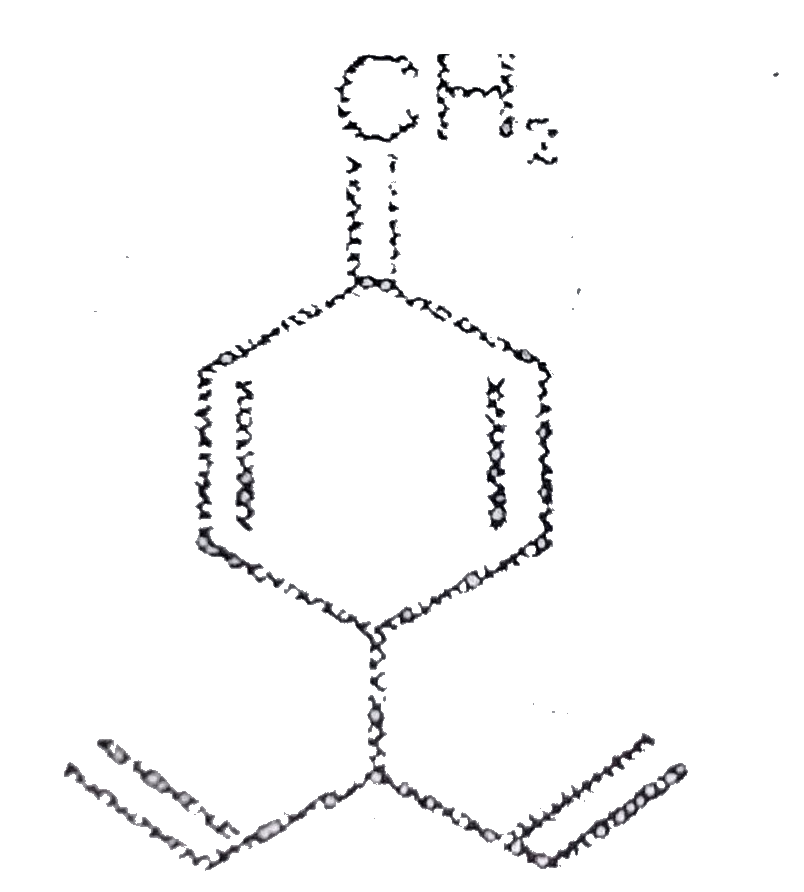
View Solution

 is shown by which of the following names
is shown by which of the following names